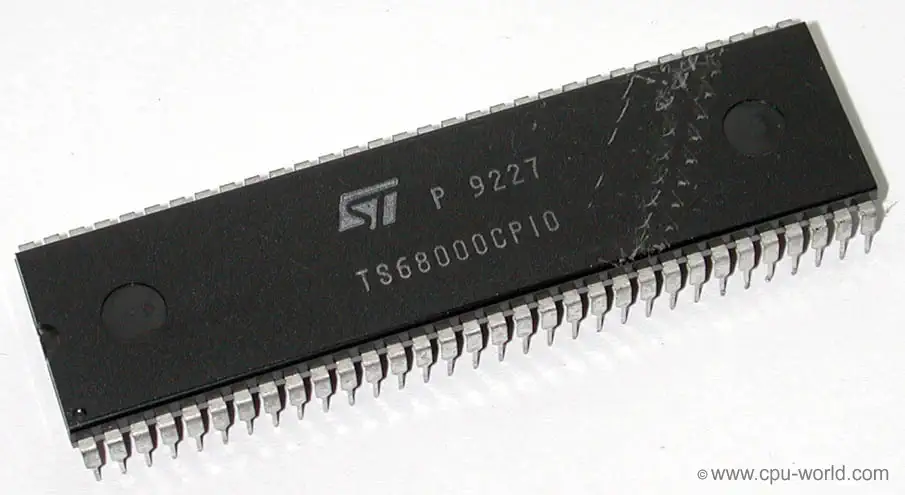Amiga CD32
The Amiga CD32, released by Commodore in 1993, was another example of a company attempting to transition a successful computer platform into a dedicated gaming console. Built on the technology of the Amiga 1200, the CD32 was one of the first 32-bit CD-ROM-based gaming systems, released just as the industry was shifting towards disc-based media. Commodore aimed to capture the power and versatility of the Amiga computer line in a console format, hoping to make a mark in a market increasingly dominated by companies like Sony, Sega, and Nintendo.
The CD32 featured advanced multimedia capabilities for the time, leveraging the graphics and sound strengths of the Amiga line, such as its AGA chipset for improved color depth and support for higher resolutions. It also included a two-button controller and access to an extensive library of Amiga games, many of which were re-released in CD format. With its CD-ROM drive, the CD32 could offer games with enhanced multimedia content, such as full-motion video and large soundtracks, which aligned with the emerging trends in gaming and multimedia. Commodore also envisioned the CD32 as part of a modular entertainment system; with the addition of accessories, it could function as a full computer, making it one of the first consoles to emphasize multimedia versatility.
However, despite its technical capabilities, the CD32 faced significant challenges. Commodore’s financial troubles limited marketing and support, and a legal issue barred the system from being sold in the U.S., cutting off a crucial market. Additionally, the CD32’s library, largely consisting of ports from Amiga computer games, struggled to compete with the more diverse and exclusive titles available on rival consoles. While it didn't achieve widespread commercial success, the CD32 has gained a following among Amiga enthusiasts and retro gaming fans who appreciate its unique place in gaming history and its ambitious attempt to blend console gaming with computer-like capabilities.
CPU View - Motorola 68000 Family
The Motorola 68000 is a 16/32-bit microprocessor that was first released in 1979. It was widely used in computers and other electronic devices during the 1980s and early 1990s. The 68000 was known for its advanced architecture, which included a 32-bit internal bus and a 24-bit address bus, allowing it to access up to 16 megabytes of memory. This made it more powerful than many other processors of its time, such as the Intel 8086 and Zilog Z80. It was also designed to be highly modular and expandable, with a large number of on-chip and off-chip peripherals.
Some of the most famous and successful computers that used the 68000 was the Commodore Amiga and the Atari ST, both of which were popular in the home and personal computer markets. Additionally, it was also used in workstations, such as the Sun 3 and Apollo DN3000, and in a wide variety of embedded systems and industrial control systems. The 68000 was also used in the Macintosh, the first model of the Macintosh was powered by a Motorola 68000 CPU. The processor was eventually succeeded by the 68020 and 68030, which offered improved performance and additional features.
The 68000 has a 32-bit instruction set, with 32-bit registers and a 16-bit internal data bus. The address bus is 24-bit and does not use memory segmentation, making it easier to address memory. There are three ALU's (Arithmetic Logic Unit), two for calculating addresses, and one for data, and the chip has a 16-bit external address bus.
The 68000 architecture was expanded with 32-bit ALUs, and caches. Here is a list with some 680x0 versions and their major improvements:
- 68010 - Virtual memory support
- 68020 - 32-bit ALU & Instruction Cache
- 68030 - On-Chip MMU, 2x 256 byte cache
- 68040 - 2x 4K Cache, 6 stage pipeline, FPU
- 68LC040 - No Floating Point Unit (FPU)
- 68060 - 2x 8K Cache, 10 stage pipelinet

Source: WikiPedia - Motorola 6800
Source: WikiPedia - 68000 Series
RAM max: 8MB Sound Chip Paula - 4 DMA-driven 8-bit PCM channels Sound 4x8-bit channels @28 kHz stereo Display Chip Denise Display 320x200 in 4096 colors
640x200 in 16 colors
1280x200 in 4 colors
Vertical resolution could be doubled using interlacing. Best Color 4096 colors Graphics 1280x512 in 4 colors Sprites 8 16pixel wide/scanline 3 colors

